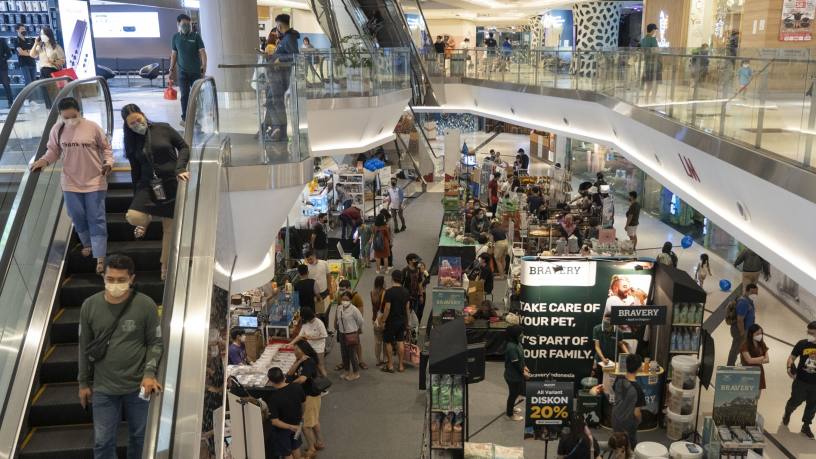At a glance
- Following a surge after pandemic restrictions were lifted, consumer spending in Asia is now facing low wage growth and inflation
- As inflation starts to fall, expectation is moving towards the central banks to enact monetary policy to further boost consumer confidence
- Due to concerns over the potential for increased capital volatility, changes are likely to be implemented gradually
Consumer spending rates across Asia are forecast to decline in 2024 because of low wage growth and a lack of action to reduce inflation, according to a report from S&P Global urging monetary authorities across the region to cut interest rates.
The report, which focuses on Asean countries, outlines how the emerging economies of Indonesia, Thailand and the Philippines are all seeing consumer confidence moderating this year, following boom years after Covid restrictions were lifted.
A key factor has been a decline in wage growth. “After adjusting for inflation, household incomes moderated in 2023 even though unemployment rates were contained — a trend that also weighs on household spending this year,” the report notes.
Vishrut Rana, Asia-Pacific economist at S&P Global and co-author of the report, said the main swing factor in supporting consumer confidence will be the actions of the central banks to cut interest rates. “High interest rates are remaining tight to margin policies across the region,” he said. “We’re seeing inflation-adjusted interest rates remaining fairly high, which is having an impact on domestic demand and affecting consumer confidence.”
However, Rana identified two alleviating factors: first, oil prices are remaining range bound, preventing energy price inflation having an impact on the overall basket. Second, food inflation, which takes up a large part of the basket in south-east Asia, has remained low.
Income growth declined in Indonesia, Malaysia and Vietnam during 2023, was subdued in Thailand, and high inflation prevented real growth in Singapore. In Malaysia, the country’s manufacturing sector saw payroll growth slow to 1.1 per cent year on year in 2023 after adjustment for inflation.
This stagnation of wage growth comes despite unemployment rates remaining stable, and falling in the Philippines compared with the country’s 2015–2019 average levels.
Falling inflation rates could help to stabilise wage growth in the coming year, and create some balance between consumer price inflation and wage price inflation, bringing some confidence to the consumer space.
At present, retail sales volumes are below pre-pandemic averages, with Malaysia, Vietnam and the Philippines showing the starkest declines. However, the S&P report notes that changing consumption patterns since the pandemic and the baskets used to determine retail sales have not moved to capture these shifts in spending habits, which may mean retail activity is being underestimated.
Looking across the region more broadly, a report from the IMF highlighted that China’s post-lockdown economic growth slowed more quickly than anticipated, which has had a wider impact on performance across Asia. The report, published at the end of 2023, also notes that disinflation is happening at a faster pace in Asia than in other regions.
The IMF has estimated that average Asian inflation fell from 3.8 per cent in 2022 to 2.6 per cent in 2023, with the largest falls in emerging economies in the region.
In its December 2023 forecast for the region, the Asian Development Bank predicted Asia’s inflation stood at 3.5 per cent in 2023, and will rise slightly to 3.6 per cent through 2024. The biggest issues were identified as higher interest rates in advanced economies, which could result in financial instability.
Central bank response
Indonesia’s policy rate is at 6 per cent, after it was raised by 25 basis points in October 2023. The country’s inflation rate is within the central bank’s target of 1.5 per cent to 3.5 per cent. S&P forecasts consumers will face low real income growth and tight monetary policy, which will weigh on consumer confidence. Some relief may come later in the year, with a Reuters poll of economists forecasting that Bank Indonesia will implement a rate cut in Q3 2024.
Philippines central bank Bangko Sentral ng Pilipinas kept its benchmark interest rate unchanged at 6.5 per cent in February, with its risk-adjusted inflation forecast declining to 3.9 per cent from the 4.7 per cent it estimated in October 2023. S&P forecast that monetary policy would ease in 2024 and predicted consumer consumption would grow to 5.5 per cent over the year, below the 6 per cent pre-pandemic trend.
Of the economies in the region in need of support, Rana said Thailand could benefit from a stimulus package. Thailand’s central bank is ahead of others in monetary easing as its headline inflation has declined to below zero, standing at minus 1.1 per cent in January.
Thailand’s current target for inflation is between 1 per cent and 3 per cent. In its most recent vote, the central bank chose to keep its key interest rate at 2.5 per cent, although two monetary policy committee members voted to cut the rate to 2.25 per cent. There has also been pressure from Prime Minister Srettha Thavisin for a rate cut to stimulate economic growth.
The government under Thavisin has stated the country’s economy is in crisis, and will go forward with a stimulus package worth Bt500bn ($14bn), which will see a one-off payment of Bt10,000 made to around 50mn low-income Thais via a digital wallet, in a bid to boost spending. The sum is significant, as the average monthly wage is Bt15,000.
If there is any widespread change in monetary policy in the region, Rana said it will likely take place gradually over the year.
“It will be a gradual process as while US interest rates remain high, we’re not going to see significant easing out of emerging Asia due to capital volatility risk,” said Rana, predicting a gradual easing over the next several quarters.
During the second half of 2023, there were instances of the US federal funds rate exceeding the average rate in emerging Asian economies, which resulted in depreciation pressures on Asian currencies.










